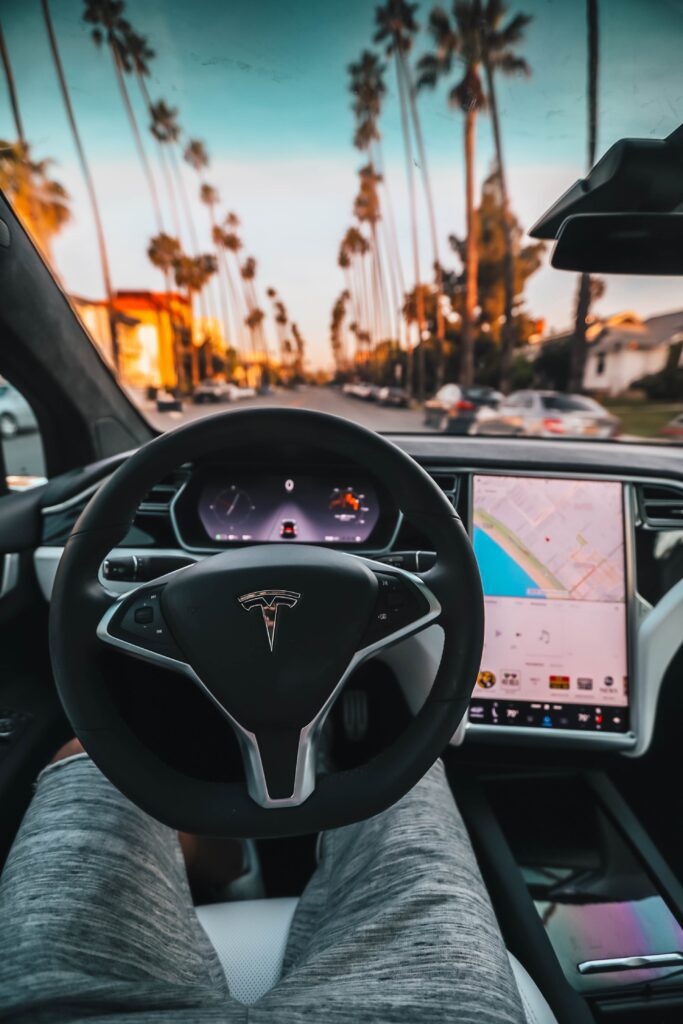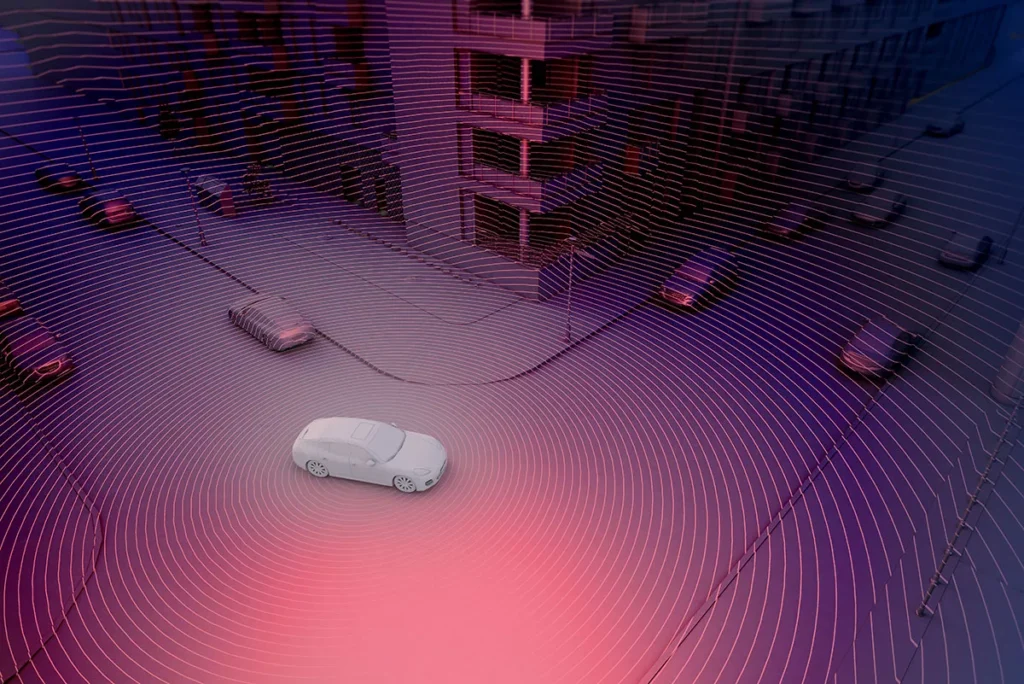The automotive industry is at the forefront of directing a paradigm shift that merges technology with transportation. Driving this transformation are several automotive innovations, primarily AI, green technologies, connectivity and telematics, and advances in autonomous driving and driver assistance systems. AI, with its myriad capabilities from machine learning to predictive analytics, is swiftly replacing traditional automobile engine systems, while environmental concerns are driving the rise of electric vehicles and green tech solutions.

Moreover, enhanced connectivity and vehicle telematics are not only reshaping our in-vehicle experience but also heralding the era of smart, connected vehicles. Lastly, the relentless pursuit of safety and convenience has given rise to autonomous driving, marked by cutting-edge technologies and advanced driver assistance systems, these automotive innovations continue to play an instrumental role in sculpting the future of the automotive industry.
The Role of AI in Automotive Innovations
Harnessing the Power of Artificial Intelligence in Automotive Innovations
Artificial intelligence (AI) is evolving at an astonishing pace, exerting an unprecedented influence on the arc of almost every industry. Notably, the automotive sector has been pivoting towards this cutting-edge technology at an exhilarating speed. Presenting an interesting intersection of AI and mechanical engineering, new frontiers of automotive innovations are being discovered.

Artificial intelligence isn’t just underpinning change; it’s driving the automotive industry forward at full throttle. Here we delve into an exploration of how AI is changing the way we navigate our roads, and the world as a whole.
- Autonomous Vehicles: The major disruptor
Autonomous vehicles are indisputably the poster child of AI’s impact on the automotive industry. From Tesla’s Autopilot to Waymo’s self-driving cars, companies are investing in AI to make human interaction for driving operations redundant. Deep learning, a subset of AI, enables cars to understand and interpret their surroundings. Cutting-edge sensor technology, coupled with machine learning algorithms, allows these vehicles to adjust speed, make turns, switch lanes, and react to live traffic situations in real time.
- Predictive Maintenance: Making breakdowns a thing of the past
For years, drivers have been at the mercy of unpredictable breakdowns. But with AI technology coming to the fore, the game is being flipped on its head. Machine learning algorithms can process and analyze vast amounts of data from the car’s system, predicting possible malfunctions before they occur. This proactive solution is not only time-efficient but has a positive effect on safety, reducing the likelihood of unexpected breakdowns, crashes, or malfunctions.
- Smart Traffic Management: Reducing congestion and saving time
Managing traffic is becoming increasingly complex with growing populations and vehicle numbers. DAOs (Decentralized Autonomous Organizations) and AI can offer solutions for effective traffic management. By processing real-time data, AI can predict congestion points, plan optimal routes, and keep traffic flowing smoothly. Intelligent traffic management systems can cut down on travel time and lower carbon footprints, contributing substantially to making our cities smarter and healthier.
- Enhanced User Experience: A personalized ride
The new era of vehicles is not just about being self-driven but also deeply personal. AI technology enables a tailored user experience within each vehicle. Voice recognition, facial recognition, gesture control, and predictive behavior analysis are making interactions with vehicles not just more enjoyable but also more efficient and safe.
- AI in Automotive Manufacturing: Quality and Efficiency
Over and above innovating the driving experience, AI applications in manufacturing are closing the loop on a futuristic automotive industry. Quality control, factory floor operations, and supply chain management are becoming faster, more efficient, and more accurate with AI’s abilities to analyze data, make predictions, and learn from errors.
The landscape of the automotive industry is experiencing a revolution driven by artificial intelligence. From getting from A to B autonomously to predicting vehicle performance, managing traffic, and delivering personalized experiences, AI is taking the automotive innovations game up a few notches. The future it hints at is exciting, not just from a technological perspective, but for its potential impact on our everyday lives, the economy, and the environment. As technology aficionados, it’s a riveting space to be part of, observe, and facilitate. Buckle up, the ride into the future of automotive is here and it’s powered by AI.
Shaping the Future of Electric Vehicles and Green Tech Solutions
Accelerating at a remarkable pace is the innovation and progression in electric vehicles (EVs) and green tech solutions. In the wake of advancements that users have savored, from autonomous driving to AI in Automotive Innovations, the technology continues to evolve and become more sophisticated. Let’s delve into the latest developments that are setting the blueprint for a green and sustainable future.

First on the radar are Vehicle-to-Grid (V2G) systems. This is a major thrust forward for EV technology that embraces an almost sci-fi possibility. In such systems, the battery of an electric car isn’t just a reservoir for power but rather a part of the grid itself. Yes, you read it right! When your EV isn’t in use, the V2G systems allow these “idling” vehicles to provide power back into the grid. As such, this technology helps regulate the supply of electricity, profiting electric car owners in the process by allowing them to sell excess energy back to the grid during peak times.
Next up is the burgeoning concept of wireless EV charging. Gone are the days of juggling tangled cables. This innovation utilizes electromagnetic fields to transfer energy between two objects – a charging station and an EV. Standout companies are emerging in this sector like WiTricity, pioneering this promising technology, and we can expect more streamlined charging experiences in the future.
Battery technology, however, is the secret sauce that will catalyze the mass adoption of EVs. The current race revolves around solid-state batteries, a major leap from the prevalent lithium-ion models. With higher energy density and a potentially longer lifespan, solid-state batteries are poised to revolutionize EVs, making them more efficient and cost-effective. Companies like QuantumScape are at the forefront, investing considerable resources into maturing this tech.
Moving onto green tech solutions, we are witnessing advancements in bioenergy applications. Biogas, produced from organic waste, harnesses sustainable fuel for both electricity and heat generation. Projects like the Maabjerg Energy Concept in Denmark exemplify the progressive use of this technology. Moreover, advancements in carbon-capturing technologies, helping to reduce CO2 emissions and slow down global warming, persist as a frontline green solution.
Similarly, breakthroughs in solar power technology are worth highlighting. Highly efficient, flexible solar films, for instance, are shifting the emphasis from bulky solar panels to more adaptable, lightweight designs. This opens up countless avenues for the incorporation of solar power in spaces where it wasn’t feasible before.

The surge of EVs and green tech solutions is undeniable, due to these game-changing advancements. These versatile and efficient technologies cannot just promise a greener future; they’re reshaping the entire landscape of mobility and energy consumption. The journey follows the road to an eco-friendly, sustainable future where technology takes the lead. So hop on board the green tech revolution, and let’s drive towards a greener, more sustainable world. The engine is revving…are you ready?
Connectivity and Vehicle Telematics
Redefining Mobility with Connectivity and Telematics
As technological advancements and Automotive Innovation continue to revolutionize the automobile industry, the perception of transportation is evolving rapidly, accelerating toward a future that seemed to be an impossibility a few years ago. One of the key driving forces behind this evolution is the integration of connectivity and vehicle telematics, charting a new course for automotive transport, promoting sustainability, and ushering in unprecedented efficiency.
Seamless connectivity has enabled Real-Time Traffic Information (RTTI) systems to come into play. These systems utilize telematics information, sourced from different vehicles and infrastructures, to optimize route planning. With this technology, congestion and time-consuming detours are now manageable, granting control back to the riders and drivers who can make real-time adjustments to their travel schedule based on this data.

The incorporation of In-Car Infotainment Systems has seen a sharp rise, thanks to the ever-growing seamless connectivity. Offering comprehensive entertainment, these systems, besides providing directions and safety alerts, also stream music, offer Wi-Fi hotspot functionality, and deliver up-to-date news, maintaining a comfortable and connected driving environment. The joy of travel is no longer just about reaching the destination, but also about enjoying the journey, and the tech-savvy riders of today are embracing this change.

Connectivity also allows for Intelligent Emergency Calling, another life-saving telematics application in vehicles. When an accident happens, the vehicle can automatically trigger an emergency call, and relay critical information like location, direction of impact, and even the severity of the impact itself to the emergency services. This accelerated, automated response significantly improves accident survival rates and is a testament to how advanced technology can notably enhance the safety aspect of our travels.
On a broader scale, telematics is facilitating the development of smart cities, turning urban areas into interconnected webs of efficiency. Vehicle-generated data can aid in shaping urban planning, optimizing public transportation, and identifying areas that require infrastructural improvements. An interconnected network of vehicles that communicate with each other and the infrastructure could be the linchpin in designing cities of the future.
Mobility as a Service (MaaS) is another concept gathering momentum in the transportation landscape. Under this model, a wide range of transport services are integrated and made accessible through a single platform, reducing the need for private vehicle ownership and promoting shared mobility. This new model is a direct result of the integration of connectivity and telematics in vehicles.
The automobile industry is at the cusp of a technological revolution. Though the future may hold many surprises, it is clear that Automotive Innovations like connectivity and vehicle telematics are playing a fundamental role in shaping the future of mobility, enabling smart and efficient travel in the process. This is just the beginning. As technology continues to evolve, rest assured, the way we travel will continue to transform too.
Autonomous Driving and Advanced Driver-Assistance Systems (ADAS)
As we delve into the world of advancing automotive technology, it is essential to shedding some light on trending developments in autonomous driving and Advanced Driver Assistance Systems (ADAS). With our sights set beyond the realm of established tech like autonomous vehicles, predictive maintenance, smart traffic management, and AI in automotive manufacturing, we explore radical and fresh developments enhancing Automotive Innovations.

Let’s first focus on the leaps and bounds made in the field of Cyberspace-oriented Vehicle Orientation (CVO). This technology, deeply rooted in the domain of Artificial Intelligence (AI), comprises a set of techniques that allow self-driving automobiles to understand their surroundings better, specifically in potentially hazardous or unpredictable situations. The next frontier in autonomous vehicle technology, CVO promises to reduce human error significantly, further boosting the safety of autonomous vehicles on the road.
Another radical innovation is the implementation of long-range LIDAR (Light Detection and Ranging) systems. These systems put forth 3D representations of the surroundings, enabling autonomous vehicles to make quick and efficient driving decisions. Key investments are being made in the development of Solid-State LIDAR sensors, promising a marked reduction in the cost and size of these crucial components.

The incorporation of Vehicle-to-Everything (V2X) communication is another groundbreaking technology redefining the boundaries of autonomous driving and ADAS. It is essentially an umbrella term covering vehicle communication systems including V2I (vehicle-to-infrastructure), V2N (vehicle-to-network), V2V (vehicle-to-vehicle), and more. The advancement of this technology enables vehicles to communicate with each other and infrastructure, enhancing road safety and efficiency.
The integration of blockchain technology within autonomous vehicles and ADAS is another trend to keep an eye on. From providing secure data exchanges for financial transactions to ensuring solid identity verification and enhancing the security of software updates, blockchain could revolutionize how vehicles interact with each other and their users.
AI has also played a crucial role in the future of autonomous driving and ADAS. As the successor to 4G LTE, 5G plays a significant part in supporting real-time, high-quality vehicle communications. It provides incredibly fast and reliable connectivity that could be leveraged to make autonomous driving even more efficient and safer than they are today.
While this might sound futuristic to some, these trends are already underway. Every day brings us closer to a world where autonomous driving is a regular part of our lives, aided considerably by advancements in ADAS. Technology remains the driver, pun intended, of this incredible journey and promises an autonomous future far beyond our wildest imagination.
Conclusion
Stepping into an era of unprecedented automotive innovations, the automotive industry is setting new benchmarks with AI-powered systems, green tech solutions, advanced vehicle connectivity, and groundbreaking developments in autonomous driving. AI has shown us a glimpse of the potential of smart vehicles while the rise in electric vehicles underscores our collective responsibility toward the environment.
Connectivity enhancements and telematics, on the other hand, are paving the way for safer and more efficient journeys, foreshadowing the dawn of completely connected cars. Furthermore, the progress in autonomous driving technologies and advanced driver-assistance systems is a testament to the industry’s commitment to improving road safety and driving convenience. As these trends continue to take shape, the future of the automotive industry seems promisingly entwined with the fabric of technological innovation.

Hi, I’m Nathan Cross, a writer and avid reader who loves crafting articles for newspapers and online platforms. Words are my passion, whether I’m telling stories, sharing insights, or sparking conversations. When I’m not writing, you’ll find me lost in a book or out on the baseball field, enjoying the game that keeps me grounded. Writing, reading, and baseball—these are the things that define me.




